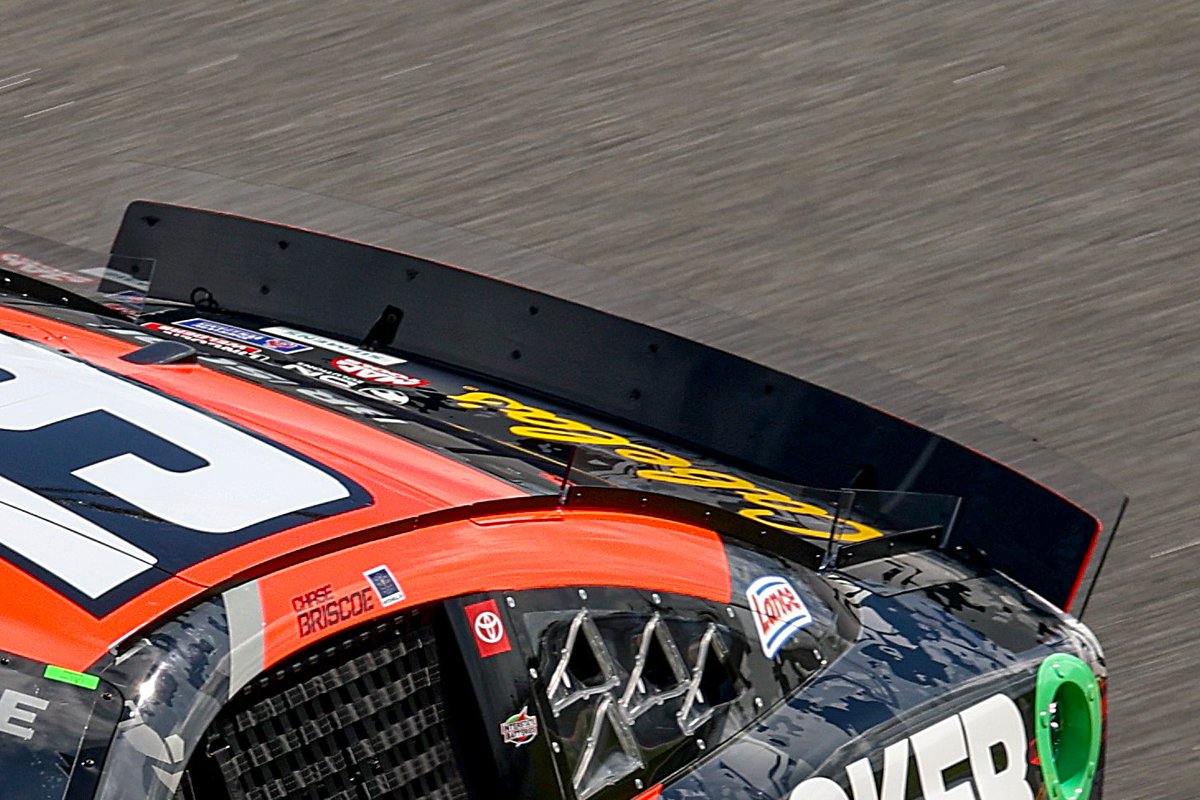“Custer said the “biggest” difference in the car for him is the steering and feeling of the tires.
“Just how they slip and how much you can get away with getting the car loose. It seems like, with how the steering is and how the tires are, you can’t really get away.”
“Just how they slip and how much you can get away with getting the car loose. It seems like, with how the steering is and how the tires are, you can’t really get away.”
https://twitter.com/danielmcfadin/status/1298342776824791042
I know that some of y’all are getting excited because it sounds like it’s harder to drive but there is much more to it and I don’t see it as a benefit to the racing.
Probably best to go back to the first test and the comments from Austin Dillon to start to explain the characteristics of this cars and specifically how it steers and turns. racer.com/2019/10/14/nex…
From that first test per Dillon: "The cars we raced growing up mostly have a rack steering system like we’re going to have in the new car, and the steering is quicker and it just reacts a little bit different than what we’ve been running in NASCAR since the beginning.”
That sounds like a positive on the face of the comment but based on what I've heard and seen of the system it was very haphazard at the time and actually quite twitchy so they had go back and work on improving it.
This is not surprising for an early prototype but the steering feel is not just from the steering rack but the design of the whole geometry as well as the tire and while they have made large improvements since that first prototype there is still a lot that needs to be done.
As a side note, that twitchy steering is also partially responsible for the "it feels lighter and faster" comment from that first test. Based of my understanding, the first two prototypes were actually slightly heavier than the Gen6 car and they may not be able to drop much.
Now take a completely new steering rack design along with a complete new suspension upright design done by a company that usually works on open wheel race cars and sports cars and you get an unpredictable mix of how the car will steer and turn.
On top of that you have all new aerodynamic elements that appear to have a lot of basis in sports cars especially when you look at the diffuser and you get unpredictable results with a car that's very sensitive especially when you put it on an oval.
Dallara is a world class racing company and they are very good at what they do but a stock car is a very specific design that needs specific engineering for stuff like yaw and over time it has become fairly apparent that engineers on the teams weren't brought into the mix enough.
Now you have a car with unpredictable aero, twitchy steering, & you put it on a tire with a shorter sidewall. That short sidewall makes it completely different to drive than any previous stock car even if nothing else had changed because the tire won't deflect in the same manner.
The drivers will all have a different feel for the car because of that sidewall as it won't deflect and lay over like the current tires. This is also why it takes time for many stock car drivers to get used to a sports car and the stiffness of those sidewalls.
They've tried to fix the issues that they've identified over time like the steering from modifying the rack to changing the position of the wheel to change scrub and while that has improved steering feel and made it less twitchy it also affects the car overall.
So with all of those issues combined we have a car that is hard to drive but more from a standpoint of being unpredictable which would likely result in pack racing with multiple cars because nobody would know what to expect if they push it over the edge.
We might get a brave soul that decided to see what's past that edge and sometimes there might be a pass and other times there might be a pileup. This is partly why I'm not excited about the car in its current state and how little input seems to have come from the teams.
The car is still in development so I am hopeful that there will be improvements in the future but combining this top down approach with extreme limits on parts like spec shocks will likely make teams reserved to add too much input at this stage because they will need it later.
Good comment from a driver that has driven both GT cars and stock cars to go along with that tire deflection note above.
https://twitter.com/AndyLally/status/1298380902523973632?s=20
Teams want to leave space so they can find performance advantages later on because so many spec parts being used are going to take away opportunities for traditional performance improvements.
https://twitter.com/mattbr123/status/1298390025772597248?s=20
Santa may still come but I just try to be realistic based on what I see and hear. I am still optimistic that the car will be figured out but it might take longer to get there.
https://twitter.com/vollcano13/status/1298413600902647814?s=20
• • •
Missing some Tweet in this thread? You can try to
force a refresh











